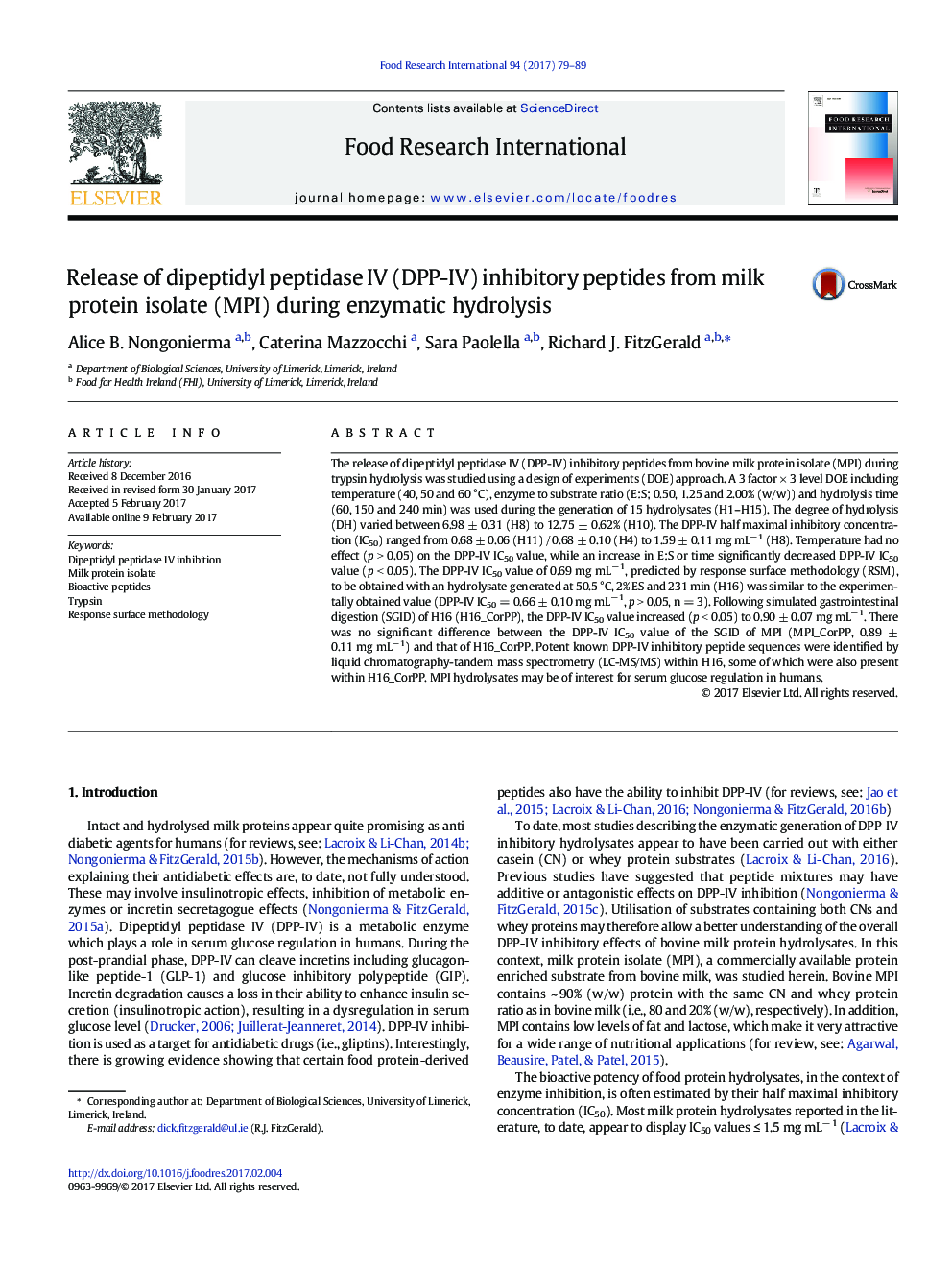| Article ID | Journal | Published Year | Pages | File Type |
|---|---|---|---|---|
| 5768288 | Food Research International | 2017 | 11 Pages |
â¢Bovine milk protein isolate (MPI) was hydrolysed with trypsinâ¢Hydrolysate dipeptidyl peptidase IV (DPP-IV) inhibitory activity was determined.â¢Enzyme to substrate ratio and hydrolysis time modified DPP-IV inhibition (p < 0.05).â¢Known DPP-IV inhibitory peptides (INNQFLPYPY and LKPTPEGDL) were identified.â¢These peptides were stable to gastrointestinal enzymes (pepsin and Corolase PP).
The release of dipeptidyl peptidase IV (DPP-IV) inhibitory peptides from bovine milk protein isolate (MPI) during trypsin hydrolysis was studied using a design of experiments (DOE) approach. A 3 factor Ã 3 level DOE including temperature (40, 50 and 60 °C), enzyme to substrate ratio (E:S; 0.50, 1.25 and 2.00% (w/w)) and hydrolysis time (60, 150 and 240 min) was used during the generation of 15 hydrolysates (H1-H15). The degree of hydrolysis (DH) varied between 6.98 ± 0.31 (H8) to 12.75 ± 0.62% (H10). The DPP-IV half maximal inhibitory concentration (IC50) ranged from 0.68 ± 0.06 (H11) / 0.68 ± 0.10 (H4) to 1.59 ± 0.11 mg mLâ 1 (H8). Temperature had no effect (p > 0.05) on the DPP-IV IC50 value, while an increase in E:S or time significantly decreased DPP-IV IC50 value (p < 0.05). The DPP-IV IC50 value of 0.69 mg mLâ 1, predicted by response surface methodology (RSM), to be obtained with an hydrolysate generated at 50.5 °C, 2% ES and 231 min (H16) was similar to the experimentally obtained value (DPP-IV IC50 = 0.66 ± 0.10 mg mLâ 1, p > 0.05, n = 3). Following simulated gastrointestinal digestion (SGID) of H16 (H16_CorPP), the DPP-IV IC50 value increased (p < 0.05) to 0.90 ± 0.07 mg mLâ 1. There was no significant difference between the DPP-IV IC50 value of the SGID of MPI (MPI_CorPP, 0.89 ± 0.11 mg mLâ 1) and that of H16_CorPP. Potent known DPP-IV inhibitory peptide sequences were identified by liquid chromatography-tandem mass spectrometry (LC-MS/MS) within H16, some of which were also present within H16_CorPP. MPI hydrolysates may be of interest for serum glucose regulation in humans.
Graphical abstractDownload high-res image (96KB)Download full-size image
